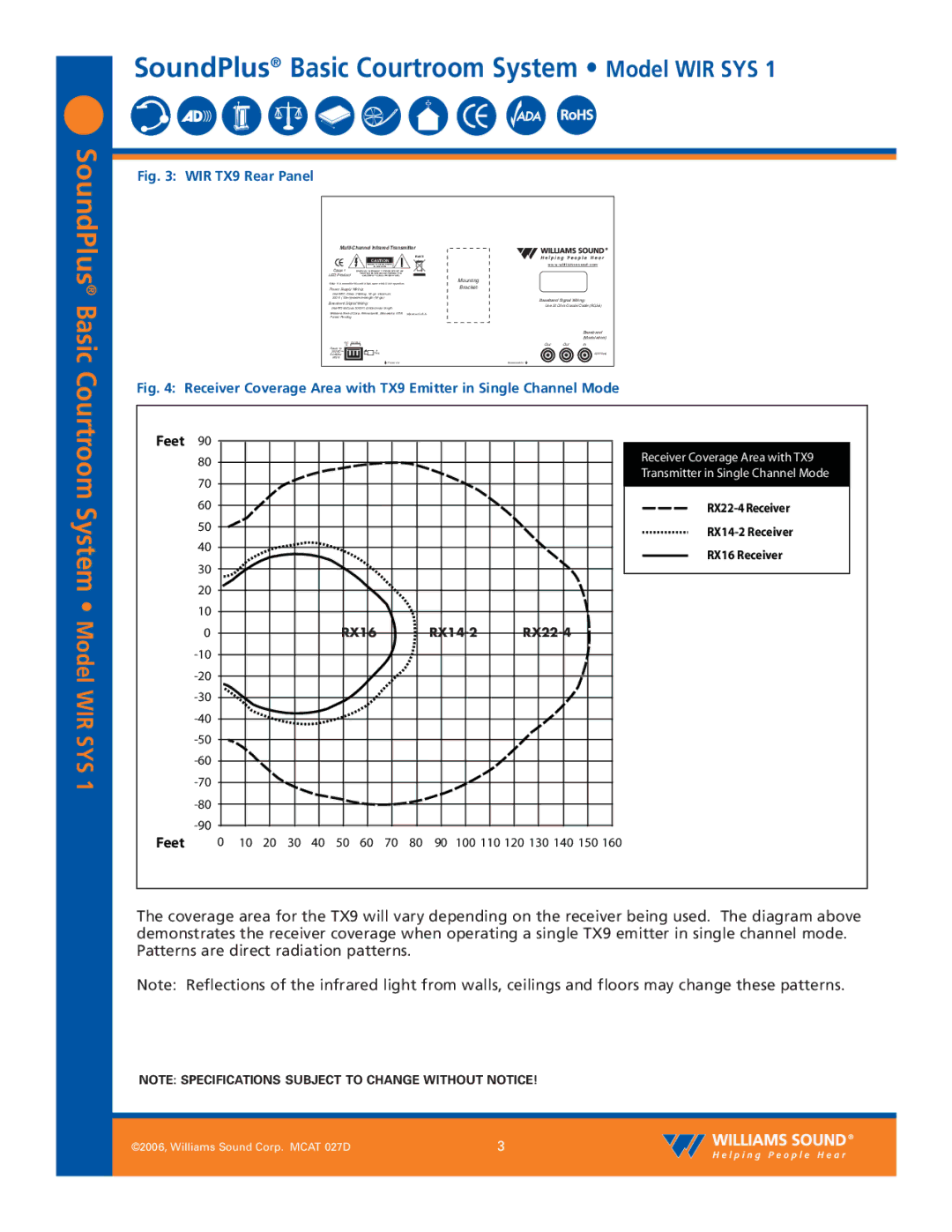WIR SYS 1 specifications
The Williams Sound WIR SYS 1 is an advanced assistive listening system designed to enhance audio experiences within various environments, including theaters, places of worship, and educational facilities. This system effectively addresses the needs of individuals with hearing impairments by delivering clear and high-quality sound directly to their hearing devices or earphones.One of the standout features of the WIR SYS 1 is its wireless technology, utilizing FM transmission to provide exceptional audio clarity. The system operates in the 72-75 MHz frequency range, ensuring reliable sound reproduction with minimal interference. This frequency range is particularly beneficial in crowded environments or locations with multiple audio transmission systems.
The WIR SYS 1 includes a transmitter that connects to any sound source, such as a microphone, television, or soundboard. The transmitter takes the audio input and converts it into a radio signal, which can then be received by the user’s personal receivers. The system can support a wide range of distances, allowing users to move freely while still receiving high-quality audio.
Users can choose between different types of receivers, including lightweight, pocket-sized options that provide a comfortable listening experience. The receivers can be used with headphones or neck loops, enabling compatibility with hearing aids equipped with telecoils. This adaptability makes the WIR SYS 1 a versatile solution for various users and environments.
Another noteworthy characteristic of the WIR SYS 1 is its easy setup and operation. The system typically comes pre-configured, allowing users to get started with minimal technical knowledge. This ease of use is crucial, especially in public spaces, where staff members may not be technically trained.
Durability is also a key component of the WIR SYS 1. Built to withstand the rigors of frequent use in various environments, the equipment is constructed with high-quality materials that ensure longevity. Additionally, the system features a robust battery life, ensuring that it can operate throughout long events or sessions without interruption.
In summary, the Williams Sound WIR SYS 1 is an excellent solution for enhancing auditory experiences in settings where clarity is essential. Its combination of wireless transmission technologies, ease of use, adaptability, and durability makes it a preferred choice for many organizations looking to improve accessibility for individuals with hearing challenges.

